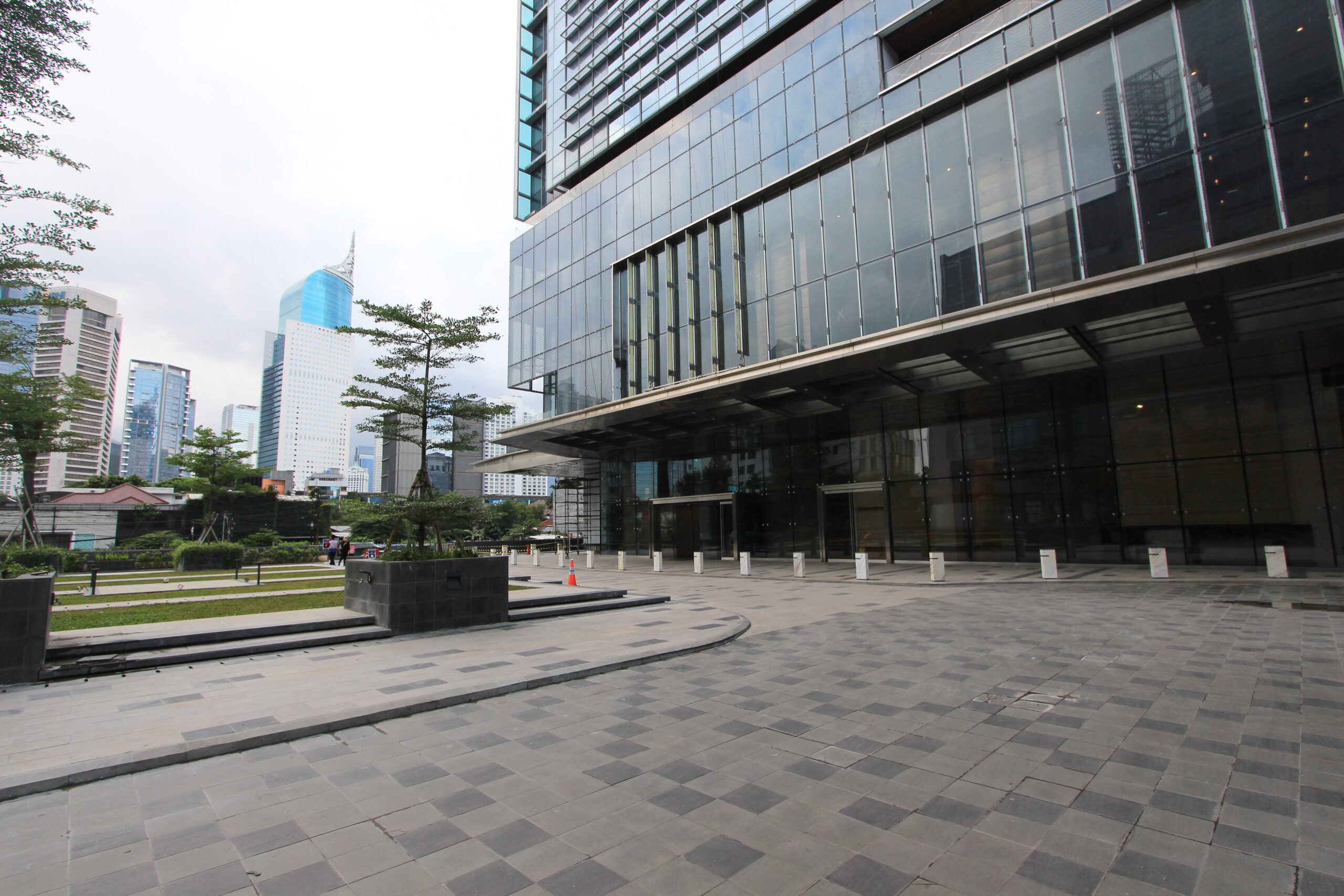The Southern Hemisphere’s tallest building rises in Jakarta
Autograph Tower showcases a story of family, ambition, and national honour

Jakarta and New York City are more alike than one would think. These megacities, financial nuclei of their respective G20 nations, have hosted some of the world’s tallest buildings.
At 385 metres high, Autograph Tower in Jakarta topped out in 2021 as the tallest building in the Southern Hemisphere—outtowering its muse, the Empire State Building.
Together with the adjacent, 304-metre-high Luminary Tower, Autograph Tower anchors the superblock known as Thamrin Nine. Stepping up in height from a low-rise retail podium, Agora, the massing amounts to a vertical village, a live-workstay-play destination for the megalopolis of 11 million.
There are just so many different uses taking place there (in the tower). Just knowing this dynamic nature of existence in Jakarta, the building feels to me like an embodiment of that excitement and fluidity
The architect, New York’s Kohn Pedersen Fox Associates (KPF), has built giants before, among them the Shanghai World Financial Centre, Lotte World Tower, 30 Hudson Yards, and One Vanderbilt.
“We’ve got almost all of New York pulled into the Autograph Tower because there are just so many different uses taking place there,” says KPF principal Robert Whitlock. “Just knowing this dynamic nature of existence in Jakarta, the building feels to me like an embodiment of that excitement and fluidity.”
After the global financial crisis, property developer PT Putragaya Wahana contemplated constructing an office building beside its then-newly completed project, the 40-plus-storey UOB Plaza. Honouring the wishes of his father, Putragaya Wahana president director Alvin Gozali then thought of building a 50-storey building with a hospitality component.
At 5.2 hectares, the underlying site, which neighbours Bunderan HI and the Hotel Indonesia roundabout, had taken more than two decades to acquire. “It was a herculean effort to get it cleared,” says Michael Wiener, design director at Putragaya Wahana. “Imagine being in the middle of Times Square, Trafalgar Square, or Raffles Place. Putting it together and doing so over 20 years was a huge step.”

The project gained momentum in 2018 when Jakarta relaxed its flight path rules, finally allowing for an edifice higher than 333 metres. The developer seized on the opportunity to build a supertall, playing up Jakarta and New York’s shared history as Dutch colonies.
“We took the opportunity because we really would like to reference Autograph Tower with the Empire State Building, which is at a similar height,” says Gozali. “Jakarta and Manhattan have a very strong relationship. So, we thought that it would be a nice story to tie the two cities together.”
Emphasising the New York connection, the upper floors of the tower house a Waldorf Astoria hotel, the first in Indonesia.
Gozali had to fly to Las Vegas to convince the late Eugene Kohn, founder of KPF, to take on the project. “Eugene was concerned about whether we can do his design right, make sure that the quality came through, and not give people a watered-down version of a KPF concept,” says Gozali.
“We hope that we did him proud with the first supertall in Jakarta.”
KPF went on to meet with Putragaya Wahana in 2010 to work on the initial design studies for the towers. The team considered the broader masterplan for the site, which includes the colonial-inspired residential area now known as Le Parc.
“Our goal isn’t to break height limits around the world,” says Whitlock. “Having the building be the tallest gives it special attention and the attention that it deserves for all of the other things that it’s doing.”
KPF expressed Autograph Tower as pinwheeling glass planes with carefully positioned reveals. The angular, rectangular building is designed to have slightly recessive corners, portraying a character distinct from the main curtain type.
“The design makes the building look taller and slender because the façade is not going from corner to corner,” says Whitlock. “It’s also more dynamic in appearance, almost like it’s spinning.”

KPF sought high-performance curtain walls and deep shading devices for the building. The high-efficiency skin resulted in an envelope thermal transfer value (ETTV) value of under 40 watts per square metre.
The façade uses double low-E glass like most sustainably designed projects worldwide, with an innovative caveat. A coloured substrate reduces the reflective element of the glass, letting occupants command city views without their reflections in the way.
Horizontal sunshades, followed by a set of verticals, project from the façade. “To me, the façade feels kind of woven and screenlike in nature,” says Whitlock. “There’re plenty of examples in Indonesian culture, like the wayang or shadow puppets or just the natural shading that takes place in traditional indigenous construction.”
Autograph Tower uses light shelves, which bounce sunlight onto the ceiling and lessen the need for perimetre lighting.
The central atrium of the Waldorf Astoria features a skylight. Guests walk on sunlit corridors, instead of dark hallways, to their rooms as a result.
“One of the amazing things about Jakarta is the quality of the natural light,” says Whitlock.
The tower’s use of an elongated offset core freed up space for the atrium. Consequently, the core-to-perimetre distances deepened to as much as 15 metres. Blocking over half the west-facing façade, the offset core also served to diminish the heat gain from the sunlight bombarding Jakarta from that direction.

Shooting heavenwards at nine metres per second, Thamrin Nine’s destination-controlled lifts are some of the fastest in Indonesia. Autograph Tower features a wide lift with a five-ton capacity, able to convey everything from luxury cars to chillers towards the top floors. The development also has security accoutrements comparable to the ones in Burj Khalifa, complete with Honeywell facial recognition systems.
Autograph Tower is as heavy as it is tall, its girth and mass apropos of its situation in a seismic zone. Predominantly made of concrete rebar and built with a high-density concrete aggregate, the tower can withstand earthquakes without the need for a seismic bearing. In place of a damper system, the tower utilises a belt truss, the largest to be approved by the city government.
The structural engineering team, which includes Seattle’s Magnusson Klemencic Associates (MKA) and Singapore’s Meinhardt, went above and beyond Jakarta’s seismic code to implement a trailblazing performancebased design for the tower.
“We had to make sure that it’s structurally very sound,” says Gozali. “It’s our first time, the city’s first time, the country’s first time, so all eyes were on us.”
From basement to the spire—a photogenic vantage point of the tower called the Campanile—the tower structure spans 109 floors and over 400 metres. Four illuminated observation decks cantilever off the Thamrin Nine massing.

From Autograph Tower, the Skyline Observatorium commands city views as high as 325 metres above ground level. Thrill-seekers can fasten themselves to the building and stroll along an open-air walkway.
Down below, Autograph Tower has the deepest piles of any building in Indonesia at around 85 metres. With contractors that included major players like Acset Indonusa and Total Bangun Persada, the site was excavated at depths of more than 20 metres, exhuming about 600,000 cubic metres of dirt.
The subterranean works continue. This year, the developer is tunnelling direct access to the Dukuh Atas MRT station.
The completion of Jakarta’s first MRT system inspired the diversification of the Thamrin Nine programming over the last few years. The base of the complex has expanded to encompass long-span spaces like an amphitheatre, ballrooms, a sports hall, and an IMAX theatre.
“Negotiating that sheer density and overlaps of programs was fascinating for me,” says KPF director Daniel Dadoyan. “It was a very fluid process and at times we felt like magicians,” Whitlock adds.
Pursuing a BCA Green Mark Platinum certification, Autograph Tower reclaims the flora from its footprint with vertical green walls and landscaping on the rooftop and public plaza. Thamrin Nine is piloting the biodiverse Organica wastewater treatment plant in Indonesia, with infiltration wells and retention ponds ensuring zero run-off.
Autograph Tower also houses an alternative to cardependent, Silicon Valley-style campuses in the suburbs with its penthouse office suites. The suites offer a cavernous option in addition to the tower’s Grade-A offices: multi-level office spaces at triple heights, set in the CBD.
Despite the Gotham association, Jakarta is a city beyond compare, and Autograph Tower is very much a structure derived from its distinctive context.
“We delivered the tallest building in the Southern Hemisphere,” says Gozali. “It gives us a bit of nationalistic pride that we could do that.”
The original version of this article appeared in PropertyGuru Property Report Magazine Issue No. 178 on issuu and Magzter. Write to our editors at [email protected].
Recommended
Meet the expert helping overseas investors crack Australia’s property market
Ivan Lam of property advisors Charter Keck Cramer helps clients navigate Australia’s complex real estate dynamics
ARES White Paper Volume 3: The era of adaptive reinvention
Pioneering sustainable and innovative practices in urban development
ARES White Paper Volume 2: Unravelling the power of data revolution in real estate
Insights on proptech, smart cities, and sustainable development
ARES Digital White Paper Volume 1: The fundamentals of responsible building
Green and climate heroes join forces to discuss how Asia Pacific can weather the current environmental crises and the looming effects of climate change







